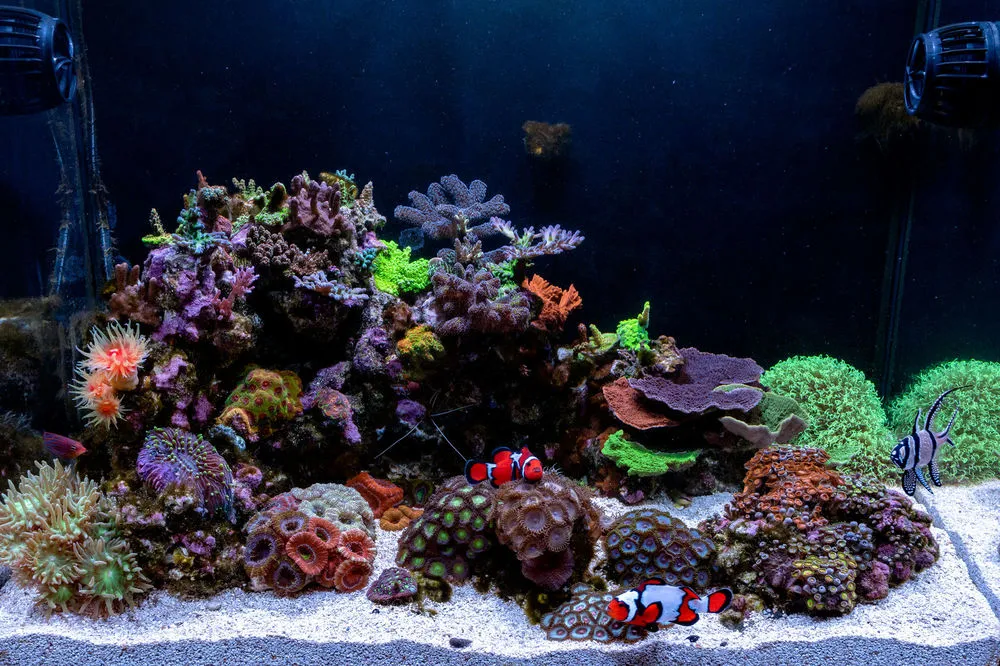Stunning 40-Gallon Reef Tank – teenyreef's TOTM | NanoReef

Tank Specifications
Volume: 40 Gallons / 151 Liters
Dimensions (L × W × H):
24.0" ×
20.0" ×
19.0"
61.0cm ×
50.8cm ×
48.3cm
Equipment List
- Salt: ATI Essentials
Frequently Asked Questions
How should I set up the lighting for a nano reef tank?
For a 40-gallon nano reef tank, consider using a combination of high-quality LED lighting along with T5 bulbs for the best results. The LEDs provide focused light, while T5s offer broader coverage, preventing shading and promoting better coral coloration and growth. Adjust the intensity based on the needs of your corals.
What are the recommended filtration methods for a reef tank?
A well-structured filtration system is key. For this setup, consider using a media basket in the back chamber with filter floss, activated carbon, and bio plates. Regularly change the filter floss and carbon (every 3-5 days) to ensure effective filtration.
How can I maintain stable water parameters in my reef tank?
Use automation tools like dosing pumps for essential trace elements, alkalinity, calcium, and magnesium. An automatic top-off system can help manage evaporation. Regular testing (every few days for alkalinity and monthly for nitrates, phosphates, calcium, and magnesium) is crucial.
What types of corals are best for a beginner in a mixed reef tank?
Beginner-friendly corals include soft corals like Zoanthids and mushrooms, and some LPS corals such as Acan Lords and Duncans. These corals tend to be more resilient and easier to care for compared to SPS corals.
How do I choose fish for my nano reef tank?
In a nano reef tank, select smaller, peaceful fish that are compatible with a reef environment. Good options include Ocellaris Clownfish, Bangaii Cardinals, and Gobies, as they typically do well in smaller tanks and help maintain the tank's ecosystem.
What feeding routine should I follow for fish and corals?
Feed your fish a varied diet including frozen Mysis shrimp and algae blends daily. For corals, incorporate a mix of specially formulated coral foods, ensuring you adjust according to the feeding response of your corals over time.
What is a recommended maintenance routine for a reef tank?
Aim for the following routine: Every 3-7 days, check alkalinity and salinity, scrape algae, change filter floss, and clean the skimmer cup. Monthly, test nitrates and phosphates, clean the media basket, and run fresh carbon. Regular maintenance helps keep parameters stable.
How can I address algae issues in my tank?
To combat algae, consider increasing nutrient control by adjusting feeding levels, using carbon dosing methods, and maintaining an efficient skimming routine. Manual removal using a turkey baster or siphon can also help, along with scrutinizing water quality.
What should I do if my fish or corals are showing signs of distress?
First, investigate water parameters and ensure they are within the ideal ranges. Observe if any aggressive interactions occur between tank mates. Adjust feeding and using targeted medications can help mitigate diseases, but always research specific symptoms for proper treatment.